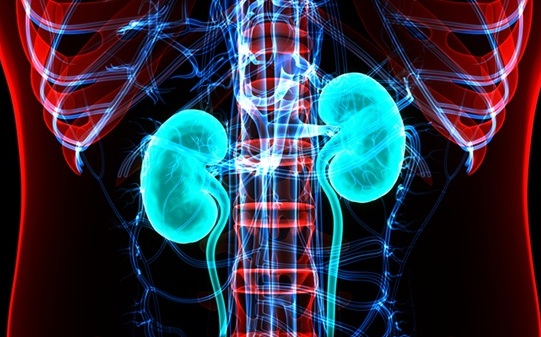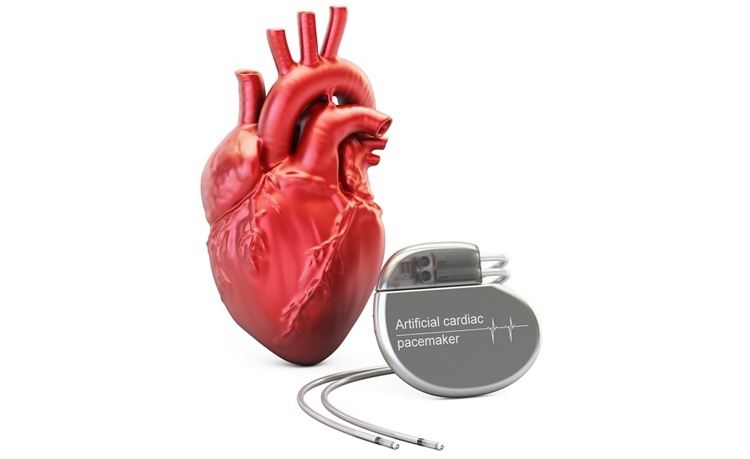Stent Implantation Found Preferable for Previously Untreated Non-Complex Coronary Artery Disease
|
By HospiMedica International staff writers Posted on 03 Sep 2024 |

Millions of individuals worldwide undergo percutaneous coronary intervention (PCI) each year, a non-surgical technique to clear blockages in coronary arteries, which supply blood to the heart. Traditionally, coronary artery disease (CAD) is treated using balloon angioplasty, where a deflated balloon on a catheter is guided into a narrowed artery, inflated to open the vessel, and followed by placing a drug-eluting stent (DES) to keep the artery open and reduce the risk of restenosis—the re-narrowing of the artery. While effective, 2% of patients experience in-stent restenosis annually, which can lead to complications due to the stent's permanent presence that can interfere with the artery's natural functions and promote inflammation. This has led to interest in stent-free options like drug-coated balloons (DCB), which have proven as effective as DES in treating small vessel CAD (diameter ≤ 3.0 mm), though questions remain about their long-term efficacy and safety in treating broader coronary artery conditions.
In a surprise finding of the first randomized trial to compare clinical outcomes in previously untreated patients with non-complex disease undergoing PCI, researchers from Xijing Hospital (Xi'an, China) discovered that DCBs did not perform as well as expected against second-generation DES. The RECCAGEFREE I trial, a randomized, non-inferiority trial, enrolled PCI patients with previously untreated, non-complex CAD from 43 sites across China between February 2021 and May 2022. Patients were randomly assigned to either DCB angioplasty with potential rescue stenting (1,133 patients) or to receive a thin-strut sirolimus-eluting stent (1,139 patients). Overall, 9% (106/1,133) of DCB patients required rescue DES placement following unsatisfactory angioplasty results.
At the two-year mark, the primary endpoint—combined rates of cardiac death, target vessel myocardial infarction, and clinically or physiologically necessary target lesion revascularization (Device-Oriented Composite Endpoint [DoCE])—was 6.4% for DCBs and 3.4% for DES, with an absolute risk difference of 3.04%, exceeding the pre-set threshold of 2.68% for non-inferiority. This discrepancy was primarily due to higher rates of revascularization required with DCBs (3.1% vs 1.2%). However, subgroup analysis indicated significant variation in outcomes based on vessel diameter, warranting further research. While DES was preferable for larger vessel disease (diameter > 3.0 mm), in small vessel disease (≤3.0 mm), encompassing over 1,000 patients, DCB and DES showed similar rates of DoCE over two years, highlighting the need for more targeted studies to confirm these findings.
“Drug-coated balloon angioplasty failed to achieve noninferiority compared to standard treatment with second-generation thin strut drug-eluting stents, mainly due to the need for more repeat procedures (revascularization),” said senior author Dr. Ling Tao from Xijing Hospital. “Our results show that the attempted strategy of “leave nothing behind” by using paclitaxel-coated balloons in de novo non-complex coronary artery disease was disproven, and DES implantation should continue to be the standard of care for these patients.”
Related Links:
Xijing Hospital
Latest Surgical Techniques News
- 'Lab-on-a-Scalpel' Provides Real-Time Surgical Insights for POC Diagnostics in OR
- Biodegradable Brain Implant Prevents Glioblastoma Recurrence
- Tiny 3D Printer Reconstructs Tissues During Vocal Cord Surgery
- Minimally Invasive Procedure for Aortic Valve Disease Has Similar Outcomes as Surgery
- Safer Hip Implant Design Prevents Early Femoral Fractures
- New Nanomaterial Improves Laser Lithotripsy for Removing Kidney Stones
- Ultraflexible Neurovascular Microcatheter Delivers Therapies to Tiniest Blood Vessels

- Magnetic Soft Robotic Valve Provides Minimally Invasive Intervention for Acid Reflux
- Wireless Metamaterial Spinal Implants Can Feel, Heal and Communicate
- Major Study Examines Endoscopies that Fail to Detect Esophageal Cancer
- Robotic Assistant Delivers Ultra-Precision Injections with Rapid Setup Times
- Minimally Invasive Endoscopic Surgery Improves Severe Stroke Outcomes
- Novel Glue Prevents Complications After Breast Cancer Surgery
- Breakthrough Brain Implant Enables Safer and More Precise Drug Delivery
- Bioadhesive Sponge Stops Uncontrolled Internal Bleeding During Surgery
- Revolutionary Nano Bone Material to Accelerate Surgery and Healing
Channels
Critical Care
view channel
Ultrasound Controlled Artificial Muscles Pave Way for Soft Robots
Creating soft robotic systems that move with biological precision is a major engineering challenge, especially for applications inside the human body where flexibility, delicacy, and wireless control are essential.... Read more
AI-Powered Alerts Reduce Kidney Complications After Heart Surgery
Acute kidney injury (AKI) is one of the most serious complications following heart surgery, raising mortality fivefold and tripling hospital costs. Diagnosis currently depends on declines in urine output... Read morePatient Care
view channel
Revolutionary Automatic IV-Line Flushing Device to Enhance Infusion Care
More than 80% of in-hospital patients receive intravenous (IV) therapy. Every dose of IV medicine delivered in a small volume (<250 mL) infusion bag should be followed by subsequent flushing to ensure... Read more
VR Training Tool Combats Contamination of Portable Medical Equipment
Healthcare-associated infections (HAIs) impact one in every 31 patients, cause nearly 100,000 deaths each year, and cost USD 28.4 billion in direct medical expenses. Notably, up to 75% of these infections... Read more
Portable Biosensor Platform to Reduce Hospital-Acquired Infections
Approximately 4 million patients in the European Union acquire healthcare-associated infections (HAIs) or nosocomial infections each year, with around 37,000 deaths directly resulting from these infections,... Read moreFirst-Of-Its-Kind Portable Germicidal Light Technology Disinfects High-Touch Clinical Surfaces in Seconds
Reducing healthcare-acquired infections (HAIs) remains a pressing issue within global healthcare systems. In the United States alone, 1.7 million patients contract HAIs annually, leading to approximately... Read moreHealth IT
view channel
Printable Molecule-Selective Nanoparticles Enable Mass Production of Wearable Biosensors
The future of medicine is likely to focus on the personalization of healthcare—understanding exactly what an individual requires and delivering the appropriate combination of nutrients, metabolites, and... Read moreBusiness
view channel
Philips and Masimo Partner to Advance Patient Monitoring Measurement Technologies
Royal Philips (Amsterdam, Netherlands) and Masimo (Irvine, California, USA) have renewed their multi-year strategic collaboration, combining Philips’ expertise in patient monitoring with Masimo’s noninvasive... Read more
B. Braun Acquires Digital Microsurgery Company True Digital Surgery
The high-end microsurgery market in neurosurgery, spine, and ENT is undergoing a significant transformation. Traditional analog microscopes are giving way to digital exoscopes, which provide improved visualization,... Read more
CMEF 2025 to Promote Holistic and High-Quality Development of Medical and Health Industry
The 92nd China International Medical Equipment Fair (CMEF 2025) Autumn Exhibition is scheduled to be held from September 26 to 29 at the China Import and Export Fair Complex (Canton Fair Complex) in Guangzhou.... Read more














